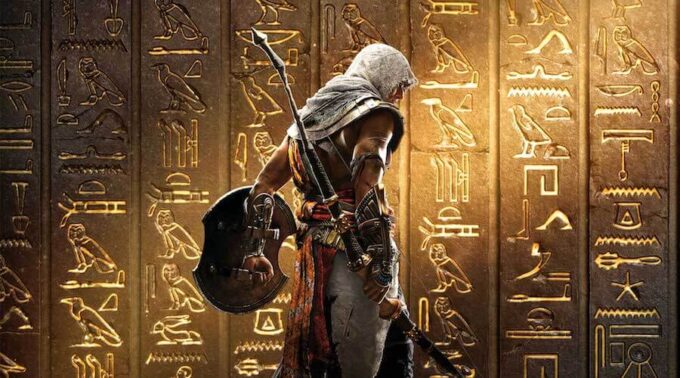Ubisoft’s pyramid scheme exposed.
Assassin’s Creed Origins arrives 27 October for PlayStation 4, Xbox One and PC.
Sorry to break this to you, but every uncharted tomb you’ve ever raided has been bullcrap. Sure, they might have been fun mausoleums chock full of Indiana Jones fan service and oddly filled with lit torches that have been burning for millennia and working machinery that’s gone un-oiled for just as long. They were also probably well designed and conspicuously full of fallen blocks to facilitate cover shooting, too. Nevertheless, let’s call it what it is: bullcrap.
If you ever considered yourself to be a true archaeologist or an “acquirer of rare antiquities”, you really ought to rethink your resume and give Assassin’s Creed: Origins a look because it’s taking tomb raiding to a whole new subterranean level.
Fellow super-fans of the series will know that these dingy locales became noticeably scarcer since Assassin’s Creed 2; however, Origins is hell-bent on not only resurrecting these but also bringing them to front-row centre with a historical authenticity no game can match.
Should you decide to gatecrash the afterlife party pads of Egypt’s one-percenters, you can expect to tackle places “built off of the actual true tombs that [Ubisoft Montreal] has researched,” explains Ashraf Ismail in a recent Official PlayStation interview. Historians were brought in early on the project to help realistically bring these places to life.
Obviously, a good dungeon needs to serve the stab-happy gameplay needs of the Assassin’s Creed series, but even in this area Ismail has kept himself and his team on a tight leash. “Our designers consulted historians when working to [craft] a puzzle, or a navigation section, in order to construct it in a way that would feel true to how the Ancient Egyptians built their tombs,” he explains.
In gameplay terms, your next mummy run in Origins could play out in a number of different ways. Navigation challenges, navigation puzzles, and classic puzzles seem to be the main events, though you will also be given more basic tombs concerned with straight up desecrating the dead by swiping everything they got, bar their best linen and jam-jarred organs.
A ludicrous amount of time and energy has been lavished upon these structures. Photographs have been pored over, and architectural layouts have been agonised about. Everything the best historians in the world know has been replicated with strict attention to detail.
Better yet, the time period and locale selected for Origins is known to be a crazy cultural melting pot. One tomb dive could be into a more modern corpse abode built by your fellow Egyptian locals. The one after may be rocking Roman influences. The one after that might absolutely reek of Greek. Literally.
Knowing that they have the fundamentals of historical accuracy wrapped up mummy-tight, Ubisoft Montreal hasn’t been afraid to incorporate a bit of “what if” in the secret chamber department, too. You’ve got to give them some leeway here, folks.
There are a bunch of well-documented and explored secret passages in real-life, but there are just as many unexplored ones too – discoveries made by thermal imaging technology, but physically denied to archaeologists (lest they ruin the precious art that gatekeeps said chambers).
For me, this is perhaps the greatest lure of tomb raiding in Assassin’s Creed: Origins. Some of the most talented modern artisans in the world have been trained up to Egyptology level 100, and then they’ve been let loose to show us what the real-life locations just beyond our grasp look like.
Forget those crappy, budget props you see on The History Channel, presumably made by an intern running a shareware version of 3D Studio Max. The hidden tombs in Origins have had some serious talent and money thrown at them. I, for one, can’t wait to get my loot boots on and kick down those doors, precious painted wall textures be damned.

